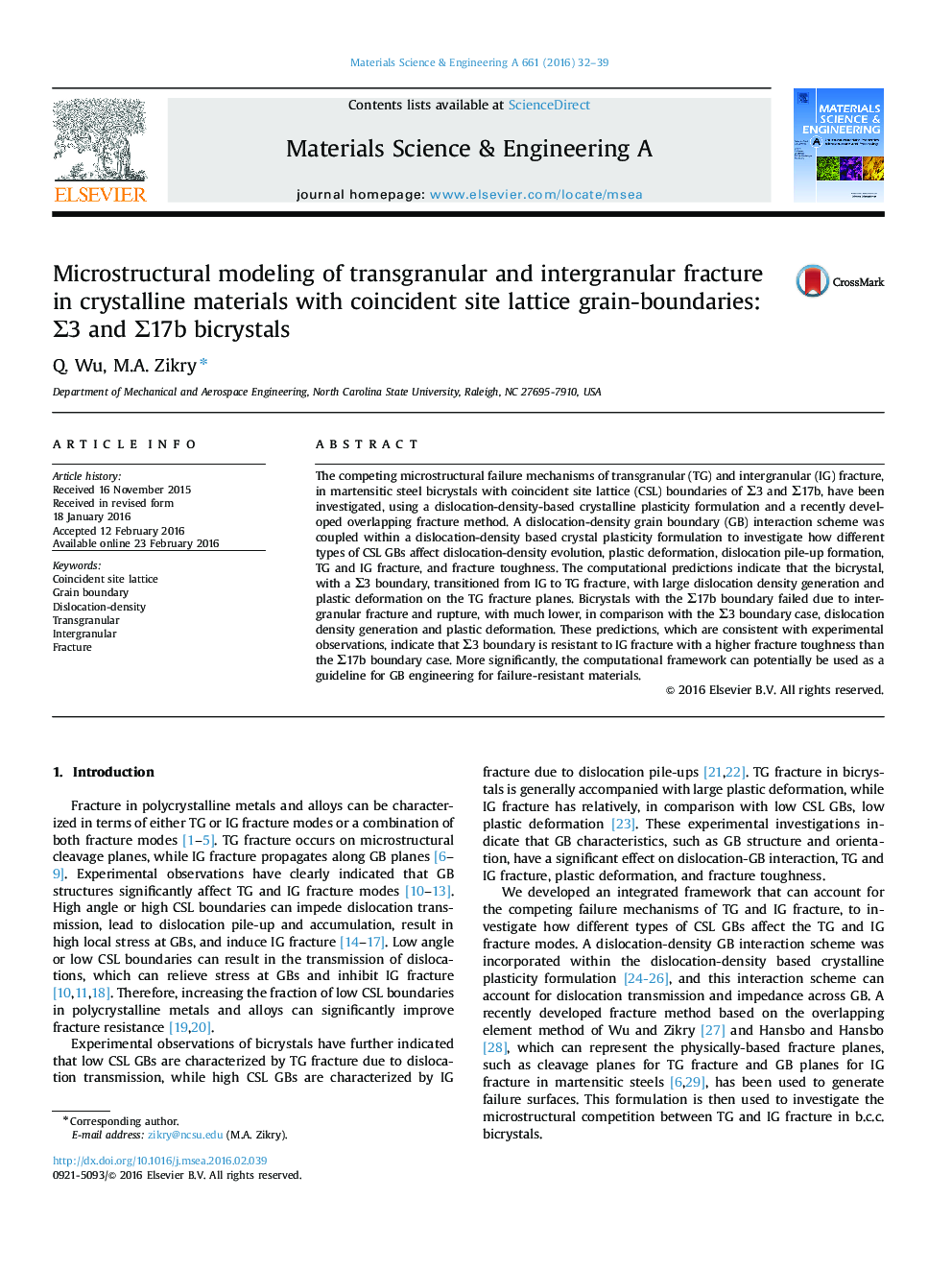| Article ID | Journal | Published Year | Pages | File Type |
|---|---|---|---|---|
| 1573500 | Materials Science and Engineering: A | 2016 | 8 Pages |
Abstract
The competing microstructural failure mechanisms of transgranular (TG) and intergranular (IG) fracture, in martensitic steel bicrystals with coincident site lattice (CSL) boundaries of Σ3 and Σ17b, have been investigated, using a dislocation-density-based crystalline plasticity formulation and a recently developed overlapping fracture method. A dislocation-density grain boundary (GB) interaction scheme was coupled within a dislocation-density based crystal plasticity formulation to investigate how different types of CSL GBs affect dislocation-density evolution, plastic deformation, dislocation pile-up formation, TG and IG fracture, and fracture toughness. The computational predictions indicate that the bicrystal, with a Σ3 boundary, transitioned from IG to TG fracture, with large dislocation density generation and plastic deformation on the TG fracture planes. Bicrystals with the Σ17b boundary failed due to intergranular fracture and rupture, with much lower, in comparison with the Σ3 boundary case, dislocation density generation and plastic deformation. These predictions, which are consistent with experimental observations, indicate that Σ3 boundary is resistant to IG fracture with a higher fracture toughness than the Σ17b boundary case. More significantly, the computational framework can potentially be used as a guideline for GB engineering for failure-resistant materials.
Related Topics
Physical Sciences and Engineering
Materials Science
Materials Science (General)
Authors
Q. Wu, M.A. Zikry,
